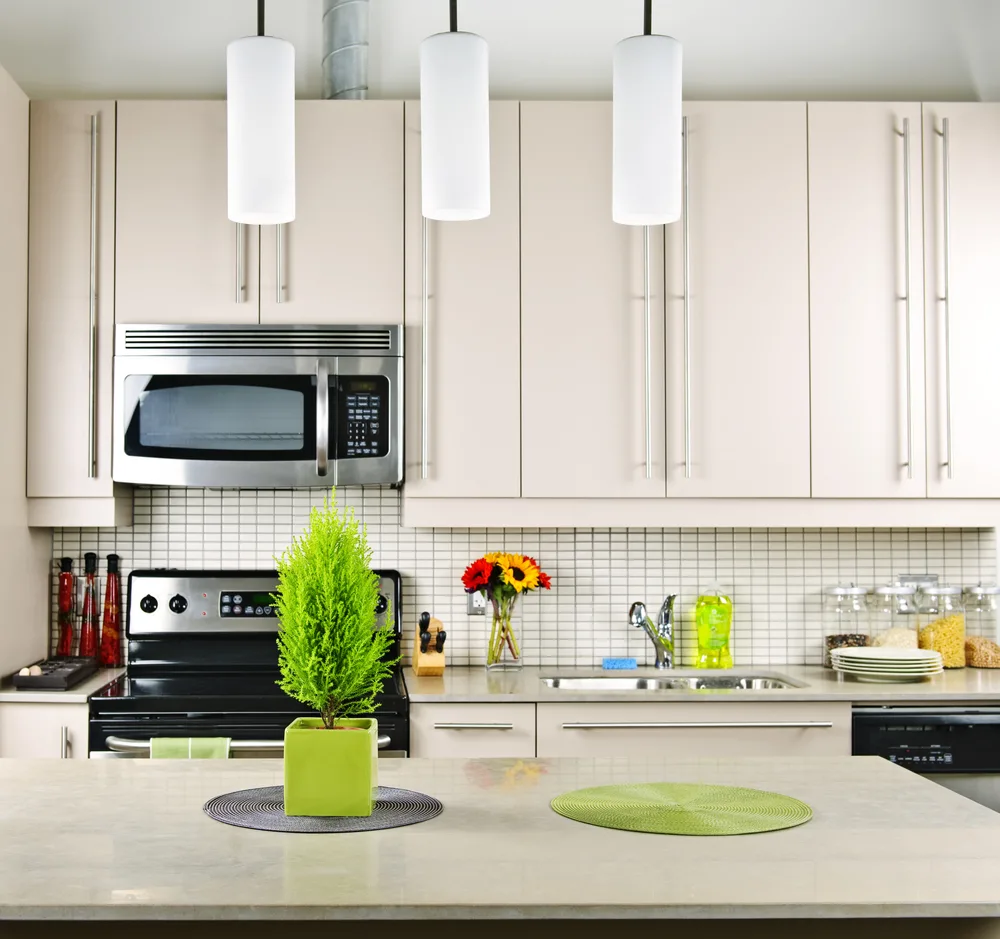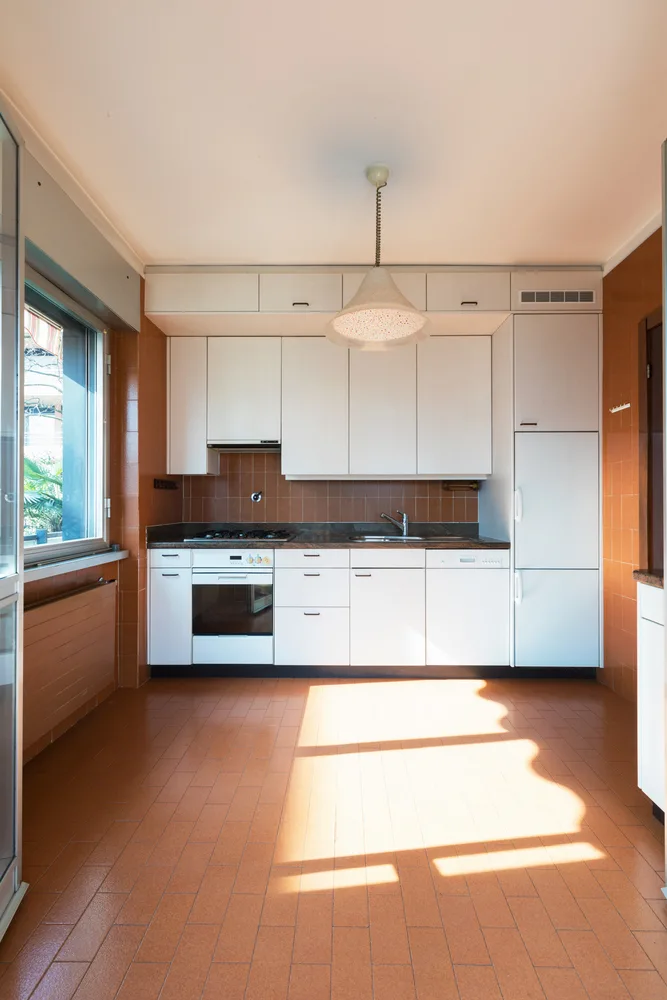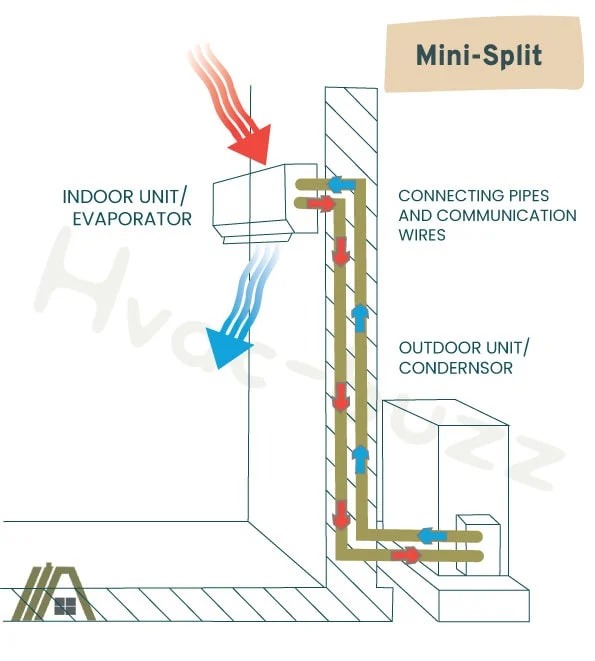If your pantry gets too warm, it can have dire consequences. The food won’t last as long, and you may find bugs and mold making your pantry their new home. Cooling the pantry is necessary if you want to keep your food safe and preserve its lifespan.
There are many ways to cool a pantry. They either involve eliminating different heat sources or incorporating new cooling elements. The best solution for your space will vary depending on the reason behind the increase of temperature in your pantry and what cooling methods are already in place there.

To cool down a pantry, its exterior walls, and the pipes and ducts running above it, need to be insulated. Direct sunlight should be blocked, and any heat-generating appliances should be removed from the pantry. Other cooling options include installing a mini-split or using fans to improve airflow.
Identify and Address Sources of Heat
Check Pipes and Ducts Are Insulated
If you have hot water pipes or HVAC ducts running in the ceiling above the pantry, they might be the source of heat that you would never think of. If they are not insulated or the insulation fails, these pipes can transfer heat to the ceiling, which then goes into the pantry.
To ensure that the pipes and ducts running over your pantry are properly insulated, you can either consult with a builder or hire an inspector to evaluate them. You may be able to check them yourself if you are able to access them through the attic.
Mitigate or Eliminate Source of Heat
Mitigating the heat from uninsulated water pipes and ducts requires either hiring a professional or rolling up your sleeves and insulating these heat sources yourself. The process of insulating the heat pipes is quite simple. It can be done with pipe sleeves. The most challenging part of this job is actually accessing the pipes.
You can also insulate your ducts at home if you have access to them. Locate the leaks and seal them using foil tape (amazon link). Then cover the ducts with an aluminum insulation roll (amazon link).
The process of insulating ducts is outlined in detail in the video below.
Is Jump Vent Near Stove?
A jump vent is meant to pressure balance two rooms in a house, so it involves a duct that runs up into the ceiling and out through another room. This duct does not draw in any air but merely allows the air to flow through naturally.
But if the jump vent is near a stove, the hot air from the stove is likely flowing through the duct and heating up different areas of the house, including the pantry.
Mitigate or Eliminate Source of Heat
The solution to this problem could be as easy as moving your stove to another location in the kitchen. This location needs to be farther away from the jump vent. You will need to unplug the stove and find another place where it could be plugged in. With a gas stove, this may be a little more tricky.
If you can’t move the stove, your other option is to close the jump ducts. Since they are not actually blowing cool air in, closing them should not negatively affect the HVAC system (closing return or supply air vents is very bad for the system).
Alternatively, you can mitigate the heat from the stove by making sure you have a fan running in the pantry whenever the stove is on. Position it to counteract the incoming air. Also, turning on your range hood will help to ensure that most of the hot air is taken out of the house entirely.
Heat-Generating Appliances
There are different types of heat-generating appliances. Ovens, microwaves, air fryers, etc., produce heat intermittently. These are the appliances you are probably thinking of when I say heat-generating appliances. But there are others like dishwashers and even fridges.

If any of these appliances are located near the entrance to your pantry, this could be heating up the inside of the pantry without your knowledge.
Fridges are possibly more of an issue because they produce heat constantly as they run, thus generating heat at all times. Many people also install their fridges or second fridges in walk-in pantries.
Mitigate or Eliminate Source of Heat
This problem can be easily solved by simply moving the source of heat that is warming up your pantry. If you have a fridge inside your pantry, this could be one of the most significant heat sources, so moving the appliance outside of the pantry is advisable.

Even when your fridge or oven is right outside the pantry, it is still advisable to move the appliance farther away if possible.
Most people don’t have an oven or other potential fire hazards within their pantry, but if you do, it is a good idea to move them somewhere else.
Windows Receiving Full Sun
Your pantry may or may not have a window. If it has one, you need to determine how much sunlight this window receives and how much of it is being blocked by curtains and blinds.
If the window is small or well-covered, it may not cause any issues. But if it is large or in an area that receives a lot of direct sunlight, it could be increasing the temperature in your pantry.
Even a large window in a room connecting to your pantry could cause the increased temperature in the pantry as the heat can transfer between adjoining rooms.
Mitigate or Eliminate Source of Heat
Mitigating heat from sunlight can be as simple as buying curtains to cover the problematic windows. Make sure to purchase thick blackout curtains for the best effect. Firstly focus on the windows inside the pantry to ensure the pantry stays cool.
Additionally, if any of the windows in connecting rooms are large and in areas with a lot of sunlight, these are important to cover as well.
Another way to decrease the effect of sunlight is to block it externally by planting trees or foliage in front of the windows. This will have less impact on the amount of light entering the pantry or adjoining room.
The best thing to do, however, would be double or triple glaze the windows. This does not interfere with lighting, but it is very effective.
Exterior Walls With Poor Insulation
If the walls of your home have poor insulation, this can affect your home’s temperature. If you live in a warmer climate, your home is going to be warmer than you may prefer.
This can affect not only the rooms attached to the external walls but also the other rooms, like an internal pantry.
If your pantry is attached to the external walls of your home, determine how well your walls are insulated to see if this may or may not be an issue.
Mitigate or Eliminate Source of Heat
To help the situation, you’ll either need to insulate your house better or use a different method of cooling your home. Just know that any other method will only be a partial solution compared to proper insulation.
Insulating the walls may be a more time-consuming and expensive solution than the other ones. However, if you decide not to fix this underlying issue, you will end up spending more in terms of the costs of running fans and air conditioning to cool the house.
If you are going to go through the extensive process of removing drywall, you may want to hire a professional to ensure it is done properly. However, you can also install insulation without removing drywall by creating small holes in the exterior siding.
Introduce Cold Air
Install a Mini-Split
A mini-split is a heating and cooling system specific to a certain area. It is highly energy-efficient. Mini-splits make great additions to the heating and cooling system. Since they do not require ducts to operate, they are ideal for places where there is no ductwork present.

Mini-splits provide heat or cooled air to a specific area or room. They are quiet and keep temperatures very exact. This will allow them to maintain a balanced climate in the pantry, not too hot and not too cool.
Something to keep in mind is that mini-splits can be pretty pricey, starting at around $3500.
Use Fans to Create Air Flow
Another way to create airflow and cool down a pantry is to use fans. There are several benefits of ventilating a pantry. The most significant one is the ability to regulate moisture and temperature, which helps prevent bug infestation and mold growth.
Pantries can be ventilated in various ways, including ventilation with windows or active ventilation with fans.
Two-way exhaust fans can create reversible airflow and are a great option for cooling a pantry. These fans are either installed into walls or propped up in windows to circulate air. Exhaust fans also remove moisture, which helps preserve your pantry items.
However, you may not have a window in the pantry or not want to create a hole in the wall. In that case, you can use regular box fans or rotating fans to cool the pantry. These can work exceptionally well if they are propped in a window or located at the pantry entrance to bring in outside air.
Sources
https://homeguides.sfgate.com/insulate-house-taking-down-drywall-20695.html
https://indoortemp.com/resources/mini-split-vs-central-air-pros-cons
